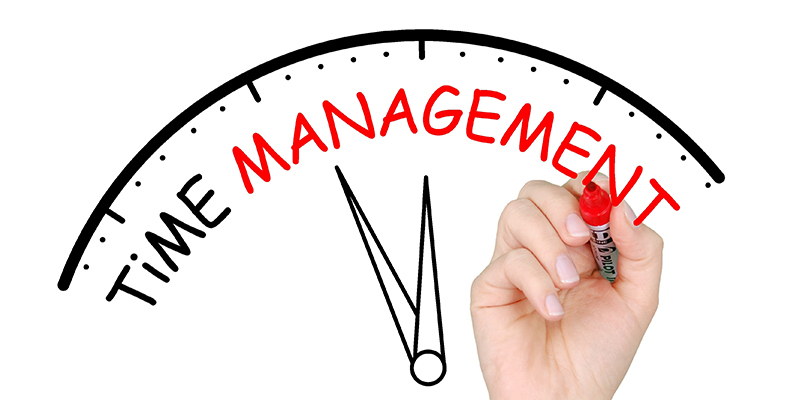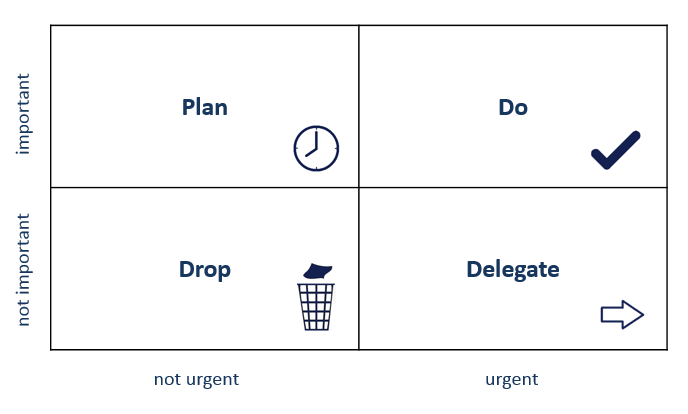Time Management – This is how Engineers Make the Most of their Time

Without question, engineers have to deal with many important tasks in their daily life. Their responsibilities are always being extended with everything a top priority which increases time pressure: more and more projects need to be handled with increasing demands in less time but stable quality. In addition, smartphones, tablets and notebooks are pinging and blinking continuously. How is it possible to use working time efficiently despite these facts?
There are many books offering advice on time management*; this is also an indication that there is a strong demand. Among them not every hint is new, not every advice is useful for each person. But a few methods seem to be particularly useful to structure your day better and to use your time much more efficiently. The goal: To handle the daily tasks during reasonable working hours and to avoid unnecessary stress and pressure.
The Eisenhower principle: Is it important or could it be dropped?
Probably almost everyone knows the four fields of the Eisenhower matrix. They are supposed to help us to prioritize tasks and to decide what needs to be done and when it needs to be done:

These simple filtering criteria help us to sort and schedule daily, weekly or monthly tasks.
Bundle similar tasks
It can be helpful to bundle similar task. For example, if you have to do phone calls on a regular basis you can block some “phone time”. Extending that thought, you could set aside specific time slots for creating technical documentation, for writing reports or for briefing your team. Experience shows that it is easier to complete tasks when similar ones are handled one after the other. At the same time you could schedule your tasks at that time when it is easy for you to deal with them. For example, Friday is a typical day for lower productivity; therefore it is a perfect day to check documentation or to do regular status calls.
Software can be helpful to organize your daily workload but not necessary. This is especially true for those who are more enthusiastic about haptics; they prefer a paper planner with colorful post-its or the traditional to-do-list. Another option is for example a “LEGO board” with the typical LEGO bricks.
Software: Email programs, time tracking and more
When choosing software as supporting tool, it makes sense to check the features of the available email program first. The standard Microsoft Office packages for example offer several options to structure your day with the email and calendar functionalities. It helps to use the calendar not only for scheduling meetings with colleagues or customers but also for planning private appointments. Simple steps to follow up on tasks:
- Define colors for all projects or customers. (also applicable for post-its and Lego bricks)
- Mark incoming emails with respective colors.
- Collect all tasks which occur on a regular or less frequent basis for each project or customer. Which could be handled daily or weekly? Schedule these blocks – marked with respective colors. This is how fixed project times or days are defined to help you focusing on the specific tasks.
- Rate the new incoming tasks according to the Eisenhower principle: is immediate action required or is it possible to include these tasks in the daily, weekly or monthly project blocks.
If you are unsure about how much time is needed for regular tasks such as dealing with emails, phone calls, reports etc., just monitor the time for a while. There are free tracking tools and apps to store and follow-up all projects. Toggl for example offers a perfect overview about the time spent on all activities just clicking on the “reports” button.
Minimize interruptions, avoid disturbances
You find it difficult to complete bundled tasks because colleagues are passing your desk frequently and you receive many calls? Maybe there are some time slots when your colleagues have to deal with their own projects or specific meetings. It is also recommended to block these hours in your calendar as “busy”. And maybe there is an option to use a separate room for focusing on specific tasks which need your full concentration and you could ask your colleagues to answer your phone during this time.
Another extra tip for email programs: trying to set up folders for each project or customer and to sort the incoming emails accordingly, makes your inbox much more structured and clear. And whenever it is time to work with the specific topic or customer all information is available. Of course, you should have a brief look at all emails prior to moving them into specific folders to make sure that no important or urgent issues escape your notice!
For time planning consider some buffers!
As an engineer you know it is necessary to take specific safety factors into account. This should also be done in your time planning. There is a rule of thumb defining that only 60 percent of the available time should be scheduled. 40 percent should remain free for spontaneous activities, unforeseeable events or tasks which could not be finished the day before.
Despite all these tips, one thing is clear: even the best time management cannot completely avoid any type of stress. There will always be some days on which the plan is not working or the schedule is messed up by unexpected events. But this is bearable as long as most of the working days within the year are passing according to the personal idea of productivity and efficiency. What do you think?
* Example: Dane Taylor, Organize Your Day: 17 Easy Strategies to Manage Your Day © CreateSpace Independent Publishing Platform 2015


Comment